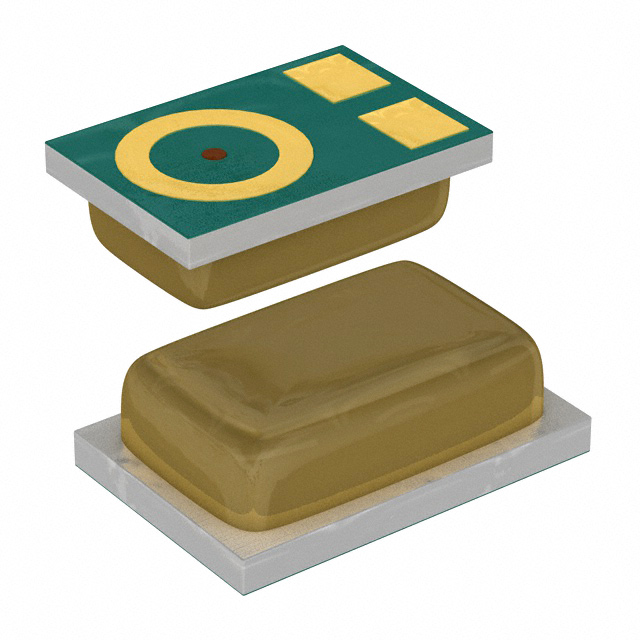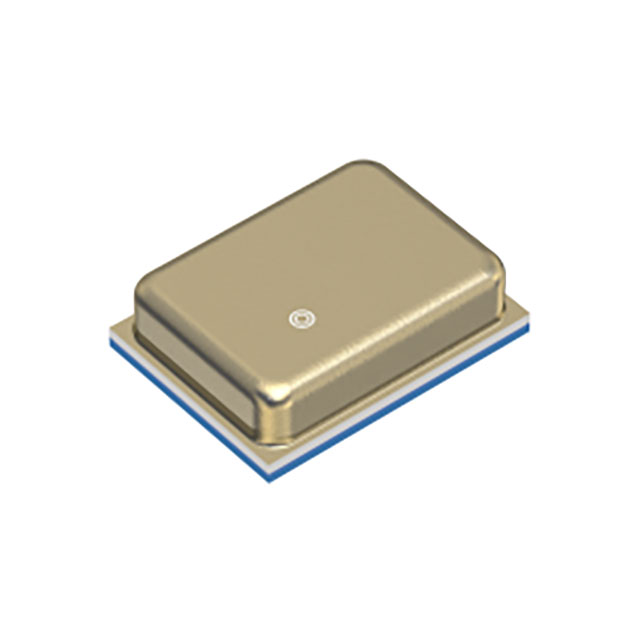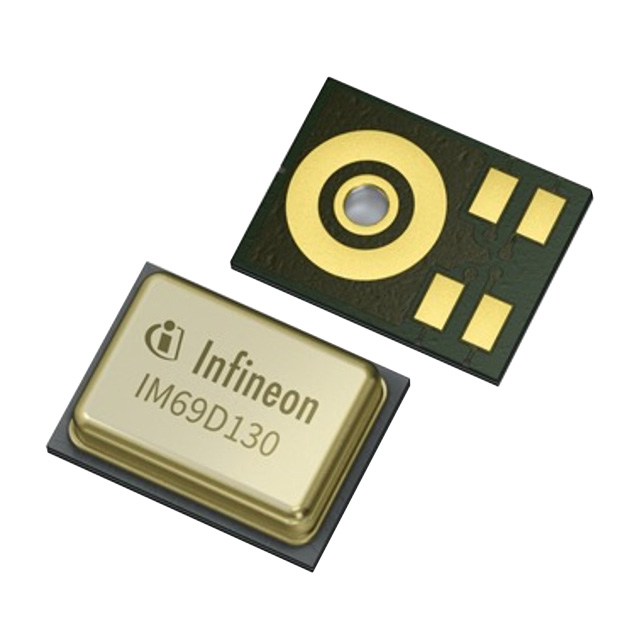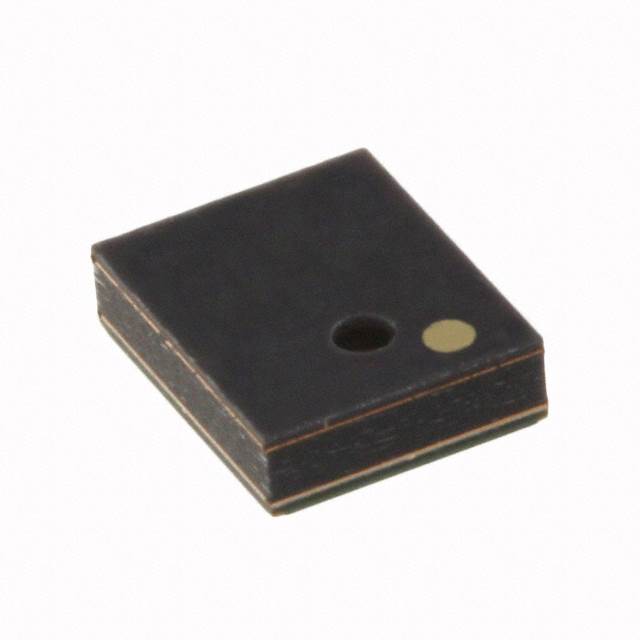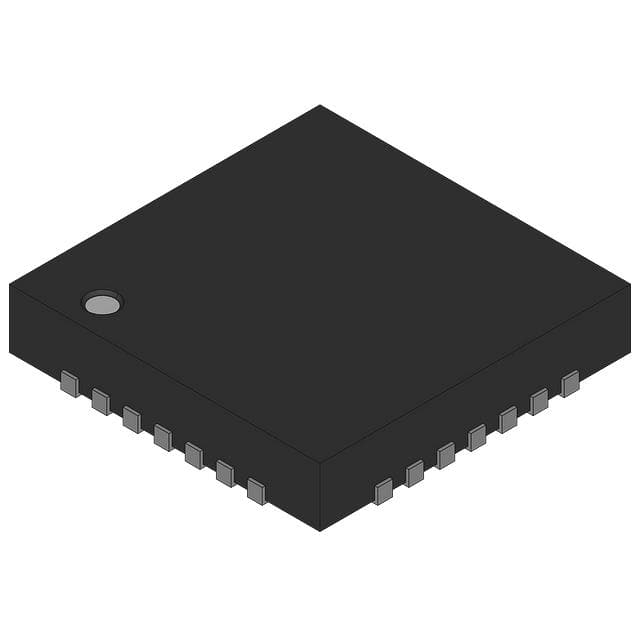ADM2587EBRWZ: Signal and Power Isolated Data Transceiver
ADM2587EBRWZ is an isolated RS-485/RS-422 transceiver chip produced by Analog Devices, which can be configured as half-duplex or full-duplex.
Microcontroller ATmega series: ATMEGA8A-AU Introduction
The ATMEGA8A-AU is a popular 8-bit microcontroller from Microchip Technology (formerly Atmel) and part of the ATmega series. It is based on the AVR architecture and is designed for a wide variety of embedded applications.
STM32F030K6T6 Development Board Introduction
STM32F030K6T6 is a microcontroller (MCU) based on the ARM Cortex-M0 core produced by STMicroelectronics.
MPU-6050: High-Performance 6-Axis Motion Sensor with I2C Bus Interface
The MPU-6050 is a widely used Inertial Measurement Unit (IMU) that combines a 3-axis accelerometer and a 3-axis gyroscope.
Texas Instruments TPS51200DRCR
The TPS51200DRCR is a high-efficiency dual-channel synchronous step-down converter produced by Texas Instruments (TI) and is commonly used in applications that provide regulated power, especially in systems that require low power consumption and high-efficiency power management.
STMicroelectronics STM32F103VET6
STM32F103VET6 is a 32-bit microcontroller based on the ARM Cortex-M3 core produced by STMicroelectronics. It belongs to the high-performance product line of the STM32F1 series and is widely used in embedded applications such as industrial control, IoT devices, and home appliance control.
STMicroelectronics STM32F105VCT6
STM32F105VCT6 is a versatile and powerful microcontroller that combines an ARM Cortex-M3 core with a rich set of peripherals and low power consumption. Its 128 KB Flash, 16 KB RAM, and extensive I/O options make it a suitable choice for a variety of embedded applications in industrial, automotive, and consumer markets. Its robust features, such as USB, CAN, ADC, and DMA, along with low-power operation, make it a solid solution for systems requiring real-time processing and efficient power usage.
Texas Instruments ULN2003ADR
ULN2003ADR is a common high current power driver produced by STMicroelectronics. It is a variant of the ULN2003 series and is usually used to control high current loads such as stepper motors, relays, solenoid valves, etc.
ATMEGA328P-PU
ATmega328P-PU is an 8-bit microcontroller manufactured by Microchip Technology (formerly Atmel), widely used in embedded systems and development boards, especially popular on the Arduino platform.
STM32F407VGT6 Microcontroller
TM32F407VGT6 is a powerful and flexible microcontroller suitable for a variety of embedded applications. Its high performance, rich peripheral interfaces and powerful processing capabilities make it an ideal choice for developing complex systems.
MCIMX6G2CVM05AB
MCIMX6G2CVM05AB is a powerful application processor that combines high-performance processing capabilities and rich multimedia functions, making it very suitable for a variety of embedded applications. Its low power consumption characteristics and flexible interface design enable it to perform well in various industrial and consumer applications.
STM32F405RGT6
The STM32F405RGT6 is a high-performance 32-bit microcontroller produced by STMicroelectronics. It is based on the ARM Cortex-M4 core and is suitable for embedded applications that require high performance and processing power.
STM32F030C8T6
STM32F030C8T6 is a powerful and affordable microcontroller suitable for a variety of low-power and low-cost embedded applications. Its flexible peripherals and diverse application areas make it a popular choice for developers.
ULN2803ADWR
Overview of ULN2803ADWR features, functions, similarities, pinouts and related Q&A
ULN2803A
ULN2803A integrated circuit working principle, characteristics, applications, similar, and related questions and answers
Microchip Technology ATMEGA128A-AU

ATMEGA128A-AU Introduction
ATmega128A-AU is an 8-bit microcontroller based on AVR architecture produced by Microchip Technology. It is widely used in embedded systems and is popular for its high performance and low power consumption.
ATMEGA128A-AU parameters
ATMEGA128A-AU Similar Comparisons
ATMEGA128A-AU vs ATMEGA64A-AUR vs AT90CAN32-16AU vs AT90CAN128-16AUR Comparison
| Feature | ATMEGA128A-AU | ATMEGA64A-AUR | AT90CAN32-16AU | AT90CAN128-16AUR |
|---|---|---|---|---|
| Image |  | 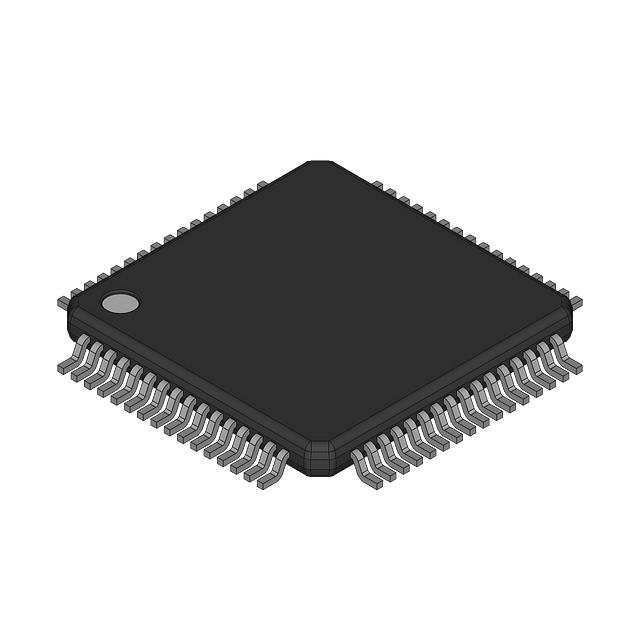 | 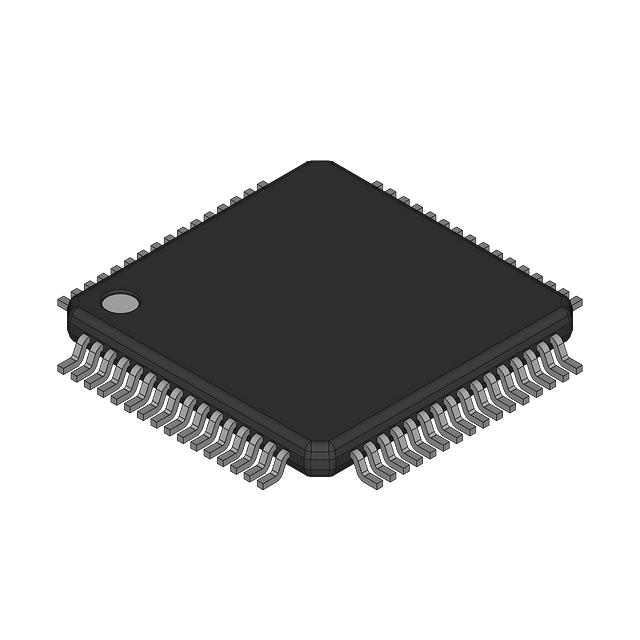 |  |
| Manufacturer | Microchip Technology | Microchip Technology | Microchip Technology | Microchip Technology |
| Architecture | AVR 8-bit RISC | AVR 8-bit RISC | AVR 8-bit RISC | AVR 8-bit RISC |
| Program Memory (Flash) | 128 KB | 64 KB | 32 KB | 128 KB |
| SRAM | 4 KB | 4 KB | 2 KB | 4 KB |
| EEPROM | 4 KB | 2 KB | 1 KB | 4 KB |
| Max Clock Speed | 16 MHz | 16 MHz | 16 MHz | 16 MHz |
| I/O Pins | 53 | 53 | 53 | 53 |
| Timers | 2×8-bit, 2×16-bit | 2×8-bit, 2×16-bit | 2×8-bit, 2×16-bit | 2×8-bit, 2×16-bit |
| ADC Channels | 8 | 8 | 8 | 8 |
| ADC Resolution | 10-bit | 10-bit | 10-bit | 10-bit |
| CAN Interface | No | No | Yes | Yes |
| USART | Yes (2 channels) | Yes (2 channels) | Yes (1 channels) | Yes (2 channels) |
| SPI | Yes | Yes | Yes | Yes |
| I²C (TWI) | Yes | Yes | Yes | Yes |
| Watchdog Timer | Yes | Yes | Yes | Yes |
| JTAG Debugging | Yes | Yes | Yes | Yes |
| Power Supply | 2.7V - 5.5V | 2.7V - 5.5V | 2.7V - 5.5V | 2.7V - 5.5V |
| Operating Temperature | -40°C to +85°C | -40°C to +85°C | -40°C to +85°C | -40°C to +85°C |
| Package | TQFP-64 | TQFP-64 | TQFP-64 | TQFP-64 |
Comparative Analysis
1.Program Storage Capacity
ATMEGA128A-AU and AT90CAN128-16AUR offer 128 KB of Flash program memory, suitable for larger programs.
ATMEGA64A-AUR and AT90CAN32-16AU offer smaller capacities of 64 KB and 32 KB, respectively, suitable for smaller application scenarios.
2.Communication Interface
AT90CAN32-16AU and AT90CAN128-16AUR support CAN bus interface, suitable for automotive and industrial communication applications.
ATMEGA128A-AU and ATMEGA64A-AUR do not have CAN interfaces, but support standard USART, SPI, and I²C.
3.Storage Resources
ATMEGA128A-AU and AT90CAN128-16AUR provide 4 KB of EEPROM and 4 KB of SRAM, which are the highest storage configurations among the four.
AT90CAN32-16AU has the smallest SRAM and EEPROM, which are 2 KB and 1 KB respectively.
4.Package and Operating Environment
All models are packaged in TQFP-64 and support industrial-grade operating temperature range (-40°C to +85°C).
Suggested Application Scenarios
| Model | Recommended Applications |
|---|---|
| ATMEGA128A-AU | Large embedded projects, industrial automation, data acquisition, robotic control |
| ATMEGA64A-AUR | Small and medium embedded projects, home appliance control, consumer electronics |
| AT90CAN32-16AU | Automotive communications, industrial control, small applications requiring CAN bus |
| AT90CAN128-16AUR | Automotive electronics, advanced industrial control, applications with large program volumes and requiring CAN bus |
ATMEGA328P-AU Datasheet
Main features of ATmega128A-AU
1.High-performance AVR core
Operating frequency: up to 16 MHz.
Supports RISC instruction set, fast execution speed, most of each instruction is completed within one clock cycle.
Built-in 32 general-purpose working registers.
2.Rich storage resources
Program memory: 128 KB of programmable Flash memory, supporting in-system programming (ISP).
Data memory: 4 KB of SRAM.
Data EEPROM: 4 KB, can be used as persistent data storage.
3.I/O and peripherals
53 general-purpose I/O pins.
Two 8-bit timer/counters, two 16-bit timer/counters, support PWM mode.
8-channel ADC with 10-bit resolution.
Supports USART, SPI and I²C interfaces for serial communication.
4.Low Power and Power Modes
Operating voltage range: 2.7V to 5.5V.
Supports multiple power saving modes (idle mode, power-down mode, etc.).
5.Operating Environment
Temperature range: -40°C to +85°C (industrial grade).
Package: 64-pin TQFP (AU indicates TQFP package).
6.Other Features
Built-in watchdog timer with independent oscillator.
Supports JTAG interface for debugging and programming.
ATmega128A-AU application scenarios
Industrial automation control
Smart control of household appliances
Data acquisition and monitoring
Robots and embedded electronic devices
Communication protocol implementation (such as UART, SPI, I²C)
ATmega128A-AU package diagram (TQFP 64 pins)
ATmega128A-AU is packaged in TQFP-64, with 64 pins, which are tightly arranged and suitable for use on high-density PCBs. The following are the main classifications of pin functions:
Power pins: VCC and GND.
Clock pins: XTAL1 and XTAL2.
Communication pins: dedicated pins for interfaces such as USART, SPI, I²C, etc.
ADC channel pins: 8 analog input pins.
ATMEGA128A-AU FAQs
1. What is ATMEGA128A-AU?
ATMEGA128A-AU is a high-performance, low-power 8-bit microcontroller based on the AVR RISC architecture, manufactured by Microchip Technology. It features 128 KB of Flash memory, 4 KB of SRAM, 4 KB of EEPROM, and operates at a maximum clock speed of 16 MHz.
2. What are the key features of ATMEGA128A-AU?
128 KB Flash memory for program storage.
4 KB SRAM for data handling.
4 KB EEPROM for non-volatile storage.
53 programmable I/O pins, supporting multiple peripherals.
Built-in USART, SPI, and I²C interfaces.
Two 8-bit and two 16-bit timers for advanced timing applications.
10-bit ADC with 8 channels.
Supports JTAG debugging.
Operates at a voltage range of 2.7V to 5.5V and temperatures from -40°C to +85°C.
3. What package type is ATMEGA128A-AU available in?
It is available in a TQFP-64 (Thin Quad Flat Package), suitable for applications requiring compact designs.
4. How does ATMEGA128A-AU differ from ATMEGA128A-MU?
ATMEGA128A-AU: Available in a TQFP-64 package.
ATMEGA128A-MU: Available in a VQFN-64 package, which is more compact than TQFP.
5. Can ATMEGA128A-AU be programmed using Arduino?
Yes, the ATMEGA128A-AU can be programmed using the Arduino IDE, but it may require a custom bootloader and board configuration as it is not directly supported out of the box like ATmega328P.
6. What is the maximum clock speed supported by ATMEGA128A-AU?
The maximum clock speed is 16 MHz, which can be achieved using an external crystal oscillator or an external clock source.
7. Does ATMEGA128A-AU support low-power operation?
Yes, it supports multiple power-saving modes, such as Idle, Power-down, and Power-save modes, to reduce power consumption in battery-operated systems.
8. What are the common applications of ATMEGA128A-AU?
Industrial automation systems.
Robotics and motor control.
Data logging and acquisition.
Consumer electronics.
Security and access control systems.
Medical devices.
9. What development tools are available for ATMEGA128A-AU?
Atmel Studio: Official IDE for programming and debugging.
AVRISP mkII: For in-system programming.
AVR JTAGICE: For debugging and programming via JTAG.
Third-party tools: Such as USBasp or Arduino-based programmers.
10. What debugging options does ATMEGA128A-AU support?
ATMEGA128A-AU supports debugging via the JTAG interface, which provides advanced debugging features such as breakpoints, watchpoints, and real-time variable inspection.
11. How does the ATMEGA128A-AU handle ADC conversions?
Features an 8-channel, 10-bit ADC.
Supports adjustable reference voltages.
ADC can operate in Free Running, Single Conversion, and Auto Trigger modes.
12. What is the typical power consumption of ATMEGA128A-AU?
In Active mode at 16 MHz: approximately 8 mA at 5V.
In Power-down mode: approximately 2 µA at 3.3V.
13. What external components are required for ATMEGA128A-AU?
A crystal oscillator (optional) for clock generation.
Decoupling capacitors for stable operation.
Pull-up or pull-down resistors for specific I/O configurations.
14. Is ATMEGA128A-AU suitable for automotive applications?
While ATMEGA128A-AU is not specifically designed for automotive-grade use, its wide operating temperature range and robust features make it suitable for non-critical automotive subsystems.
